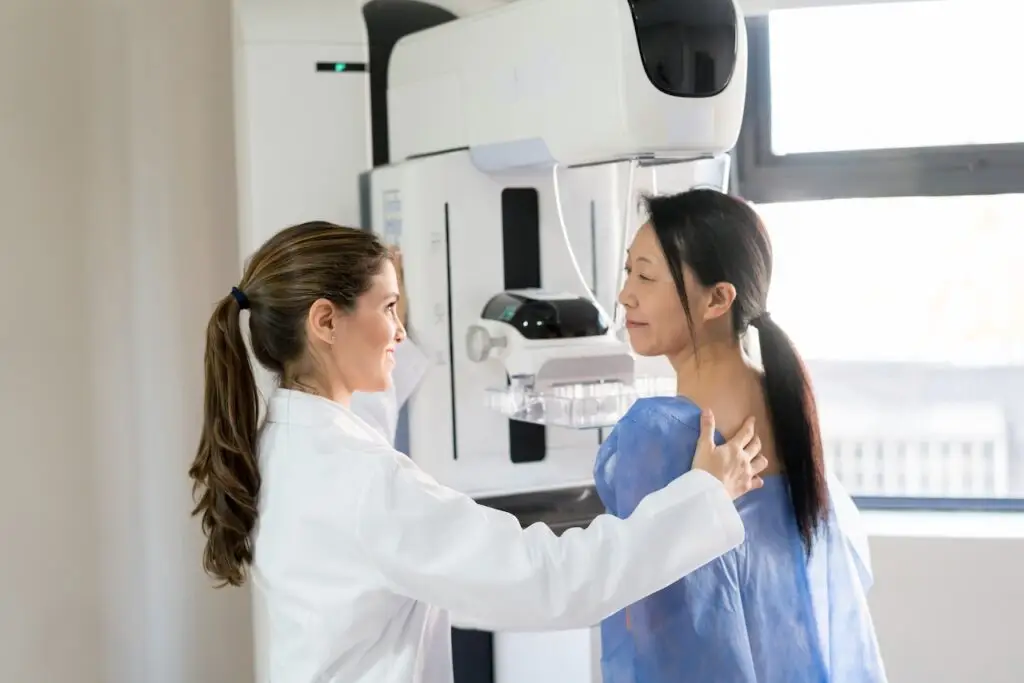For Triple Negative Breast Cancer (TNBC) Day, we’re revisiting our insightful “Ask the Expert” session with Dr. Tiffany Traina at Memorial Sloan Kettering Cancer Center. Dr. Traina is an esteemed medical oncologist specializing in breast medicine and leading the TNBC clinical research program. Deepen your understanding of TNBC and watch the full replay, below.
We’ve also transcribed some of the key points from the discussion.
The following questions and responses have been lightly edited for grammatical purposes.
Q: What’s triple-negative breast cancer and how does it differ from other types of breast cancer?
A: Super question. If you imagine, a decade or two ago, the simplest way that we had to define breast cancer was based on its hormonal drive and the majority of breast cancers are driven by estrogen and progesterone. We later recognized another important biologic driver which was the protein HER2.
When patients had tumors that tested negative for hormone receptors and negative for HER2, doctors simply called that triple-negative breast cancer because they were ER/PR negative and HER2 negative.
I think a big limitation of that terminology is that it never really described what was unique about the breast cancer. It just told you what it wasn’t. We knew endocrine therapies and antiestrogen therapies would not be a benefit. We knew that the therapies developed for HER2-positive breast cancer as it was defined back then, really wouldn’t be a benefit. So triple-negative breast cancer just simply means hormone receptor-negative, HER2-negative.
Evidence-based guidance powered by NCCN Guidelines®
Personalized treatment plans shaped by the latest oncology standards—tailored to your diagnosis.
Get started
View your personalized treatment plan in the Outcomes4Me app
Use your diagnosis to unlock personalized NCCN Guidelines®-aligned recommendations.
Continue in app
We need to do a better job of describing the subtype of triple-negative breast cancer. What are some of the important biomarkers? That’ll help describe the biology and help you and your doctors understand what the best treatments are.
Q: What are the current statistics on the prognosis for triple-negative breast cancer? Are the statistics found online accurate?
A: I would take a huge step back and say that the internet is a great place with a lot of information, but sometimes it’s challenging to put the information you find into context. How much does that apply to your own individual situation? I would say what you find online needs some professional guidance to help put it into context.
Early-stage triple-negative breast cancer, whether you hear your cancer is stage I, II, or III is curable breast cancer. The goal of therapy there whether it’s with surgery, chemotherapy, immunotherapy if it applies, or potentially radiation, all of that together, we hope to keep that breast cancer away for life and minimize any risk of recurrence to cure women of breast cancer.
The risk of recurrence varies depending on a bunch of different things. I will say that compared to what you’ll find in the literature from 5 to 10 years ago, we now have such improved therapeutics. All of that has enabled us to improve overall survival. If you Google “stage II triple-negative breast cancer,” what you find with long-term follow-up is not going to reflect our most current, hot-off-the-press therapies.
Similarly with metastatic breast cancer, we can’t say that we can make the cancer go away forever, but we have done such a better job with our therapies today. I see innovations month over month and year over year that have improved the ability for women to live longer with a high quality of life managing breast cancer with new innovative therapies.
I think these are frank, honest conversations to have with your doctor and your care team. Ask what the goal and expectation are for the recommended treatment and be sure you’re talking about your values and priorities so that your treatment plan can be very personalized for what’s most important to you.
Q: What would follow-ups look like for early-stage TNBC?
A: Follow-ups are checking in with your doctor about every six months for the first 3 to 5 years. Doing physical exams and having basic blood work done is really standard. It’s also an opportunity to make sure we’re keeping track of breast imaging in terms of future screening. So that could mean a mammogram alone or a mammogram plus something else like an ultrasound or MRI.
For post-menopausal women, it involves checking bone densities every two years. That’s because there’s an opportunity for post-menopausal women who receive a bone-strengthening medicine to have better breast cancer survival. So even though it doesn’t seem tightly correlated and not something you’d think your breast oncologist should be worrying about, you do want to think about bone health because there’s a breast cancer benefit there. We’re also helping with sorting out colorectal cancer screening so it’s an opportunity to think about wellness in general like diet, exercise, counseling, and all of the above.
As much as we would like to think additional scans would be helpful, CAT scans, PET scans, and the like, there’s really no data that doing those scans has helped catch metastatic breast cancer early. That’s the drive for imaging in mammography and MRIs. It’s the idea that if you catch something early and intervene, you can cure women of breast cancer. That has not been borne out, unfortunately, with CAT scans and PET scans.
But there is an area that I want you to think about and have on your radar because it’s where the research is going. There’s this technology for looking at circulating tumor DNA in the bloodstream before you can ever detect a lump anywhere, or that a scan is abnormal. There can be an early signal that something’s brewing by doing this circulating tumor, DNA testing. It has not yet been proven in clinical trials that if you follow circulating tumor DNA and find some, intervening with a therapy will change outcomes. But those are the trials that are being designed right now.
So if you’re interested in this heightened surveillance in a high-risk situation, you want to explore who’s doing those circulating tumor DNA studies and if you can do it in the context of a trial. The idea here is you can catch something before it’s ever apparent on a scan.
Watch the full webinar with Dr. Traina here.
Personalized support for real care decisions
Understand your diagnosis, explore clinical trials, and track symptoms--all in one place.
Get started
Compare treatments, prepare for appointments, and track side effects—all in the app
Built for your diagnosis, Outcomes4Me gives you the tools to make confident, informed decisions—right when you need them.
Continue in app







